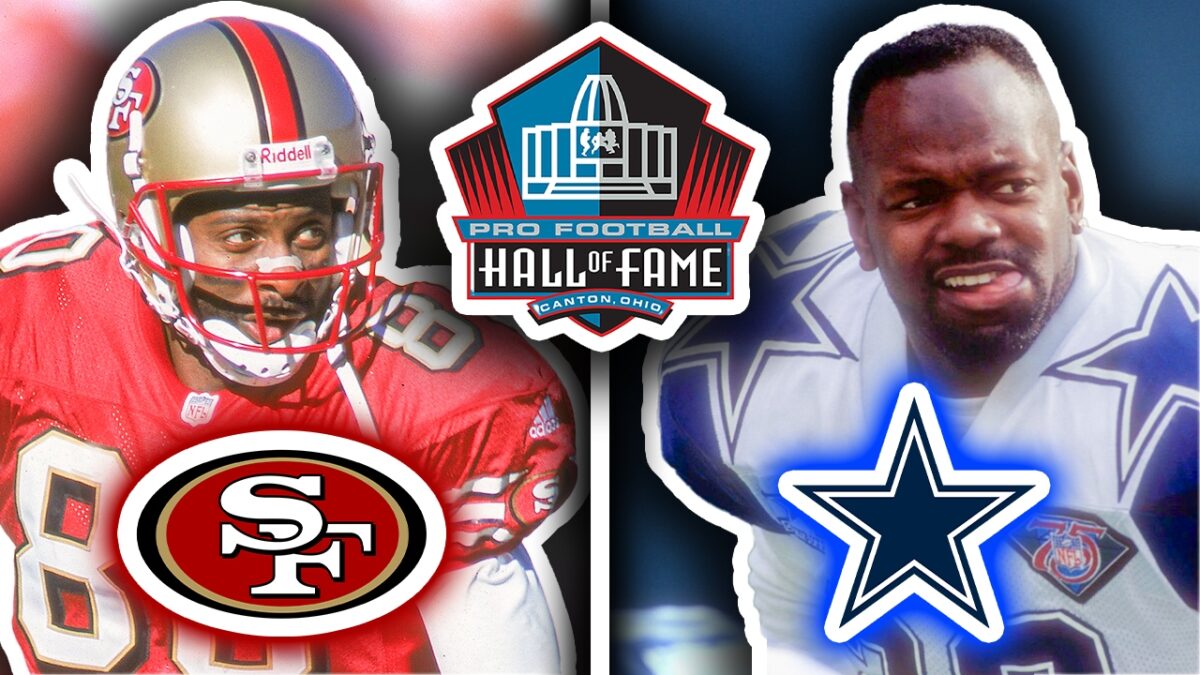
The Pro Football Hall of Fame in Canton, Ohio, is closing in on 400 inductees. Every person in there more than earned their spot, but how do you separate the BEST of the VERY BEST from a class of over 370 people?
Well, we came up with an interesting formula to decide that: What if you took an NFL legend’s career and cut it in half? And what if they displayed such excellent longevity and consistency to the point where they performed like a Hall of Famer in BOTH halves of their careers?
That, folks, is how you determine the kings of all kings. So without further ado, let’s dive into 10 NFL legends who had two Hall of Fame careers in one!
Tom Brady
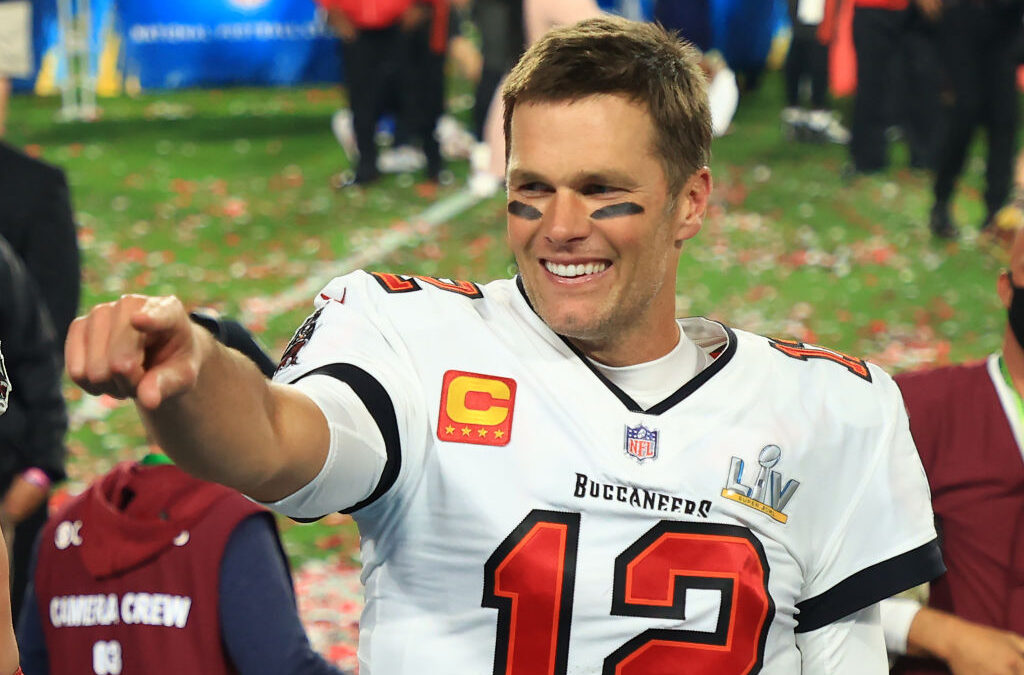
Brady played 23 NFL seasons from 2000 to 2022. But he was a backup to Drew Bledsoe in his rookie year and barely saw the field, so let’s strictly analyze Brady’s 22 seasons from 2001 to 2022:
From 2001 to 2011 alone, Brady was a three-time Super Bowl champion, two-time Super Bowl MVP and two-time league MVP. He was an 11-time Pro Bowler who led the league in passing TDs thrice and in passing yards two times.
Not to mention he also led the Patriots to the near-perfect season in 2007, when he threw a then-league record 50 touchdown passes. Also not to mention he led them to another Super Bowl appearance in 2011.
Click on ‘Follow Us’ and get notified of the most viral NFL stories via Google! Follow Us
From 2012 to 2022, Brady was somehow even better: Five Super Bowl appearances. Four more championships, including three Super Bowl MVP awards. Three championships with the New England Patriots, and one more with the Tampa Bay Buccaneers in the 2020 season.
Brady’s longevity, holder of every meaningful passing record and NFL-record seven Super Bowl rings make him the greatest NFL player ever. Not only did he have two Hall of Fame careers in one, but there’s certainly a case to be made that he actually had not two, but THREE IN ONE.
GOAT Things, we know.
Peyton Manning
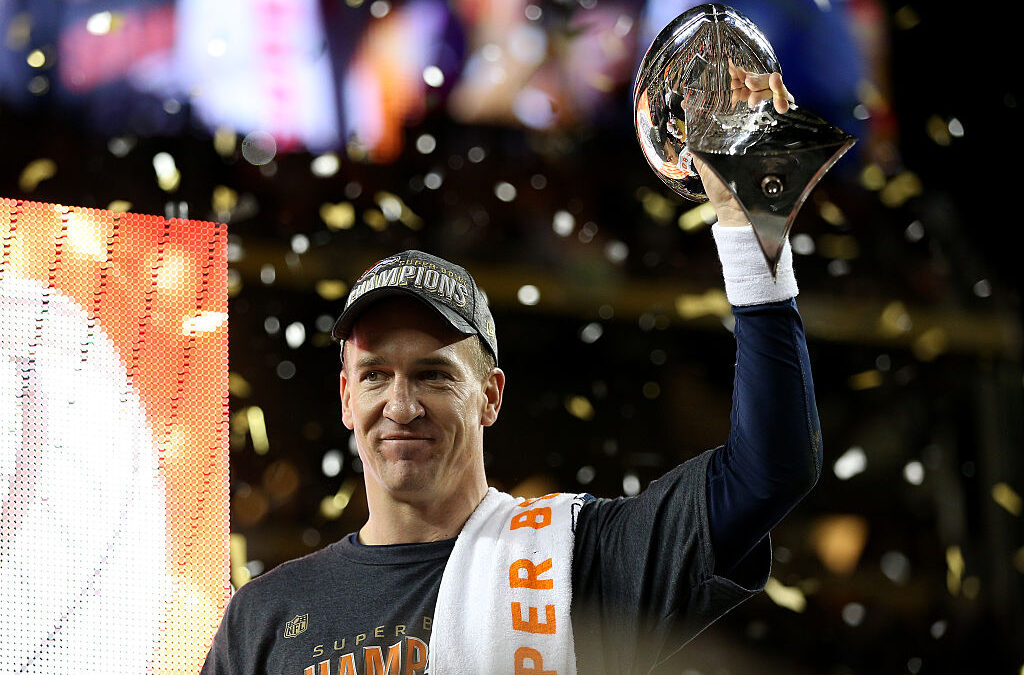
Manning didn’t play as long as his archnemesis, but “The Sheriff” certainly wasn’t too shabby himself in the 17 seasons he played.
He entered the NFL as the first overall pick from the Indianapolis Colts in 1998. Now let’s imagine that Manning called it quits after the 2005 season…
You would have a two-time league MVP, a three-time first-team all-pro and a six-time Pro Bowler with six seasons of 4,000-yards passing on his resume. Yeah, that’d be a Hall of Famer in our books.
Yet the best of Manning’s career came in the second half, which we’ll mark down from 2006 to 2015 since he missed the entire 2011 season. Manning went to four Super Bowls — two with the Colts, two with the Denver Broncos — and won a ring with each team.
Manning won MVP honors in 2008, 2009 and 2013. His 5,477 passing yards and 55 TD passes in his age-37 2013 season remain single-season records. Four of his seven first-team all-pro nods came in the back half of his career, too.
Manning went out on top by winning Super Bowl 50 with the Broncos against the Carolina Panthers. He also retired as the all-time passing yards and passing touchdowns leader, though Brady and Drew Brees later surpassed him in both categories.
Two Hall of Fame rodeos for one Sheriff. Not a half-bad career, to say the least.
Jerry Rice
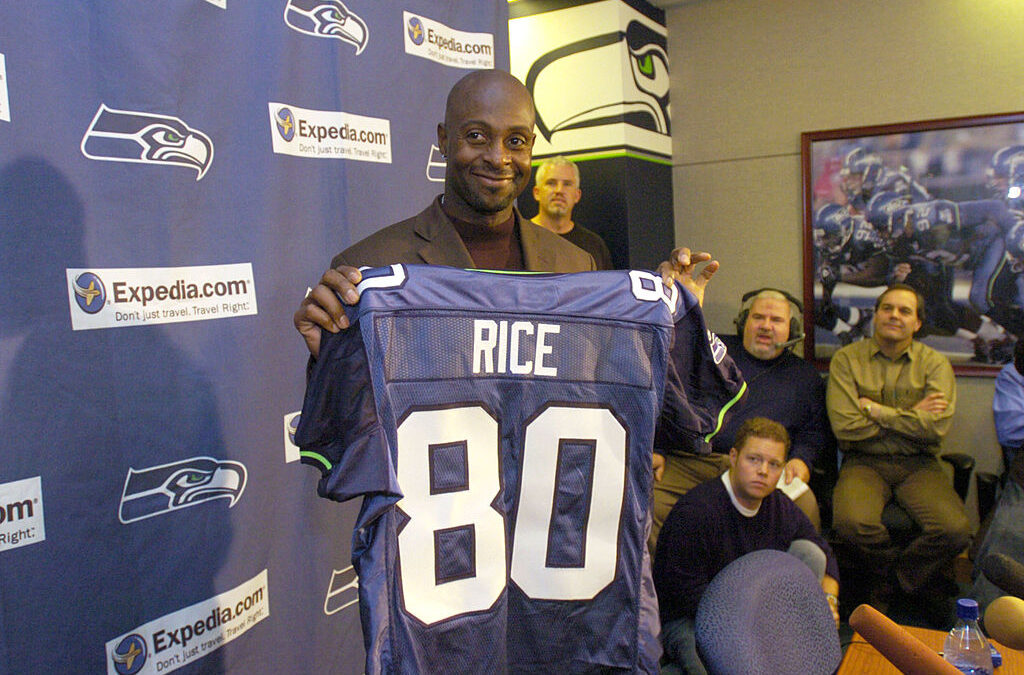
Before the second half of Brady’s career, it was easy to make the case that Rice was hands-down the greatest NFL player of all time. Still, being the best-non QB of all time is nothing to scoff at.
Rice joined the dynastic San Francisco 49ers as a rookie in 1985, and he would play a ridiculous 20 seasons in the NFL. Amazing when you consider that most of today’s top wideouts begin to slow down before their 30th birthdays…
So regarding the first half of Rice’s career – which spanned from 1985 to ‘94, here’s what he had: Three Super Bowl rings — all with the 49ers — a Super Bowl MVP, eight first-team all-pro selections, five receiving yards crowns and SIX seasons as the league leader in receiving touchdowns.
And for good measure, a spot on the 1980s All-Decade team despite not entering the NFL until 1985.
From 1995 to his swan song year in 2004? Rice continued to produce like a Hall of Famer. He had five more 1,000-yard seasons, two first-team all-pro nods, four Pro Bowl selections and a spot on the ‘90s All-Decade Team.
Rice also helped the Oakland Raiders to a Super Bowl 37 appearance in the 2002 season, where they fell to the Tampa Bay Buccaneers. He retired in 2005 as the all-time leader in receptions, receiving yards and receiving touchdowns.
And thanks to his longevity — two Hall of Fame careers in one and all — nobody will ever sniff any of Rice’s records. Nor do we expect anyone to seriously challenge his case as the GOAT of wide receivers.
Reggie White
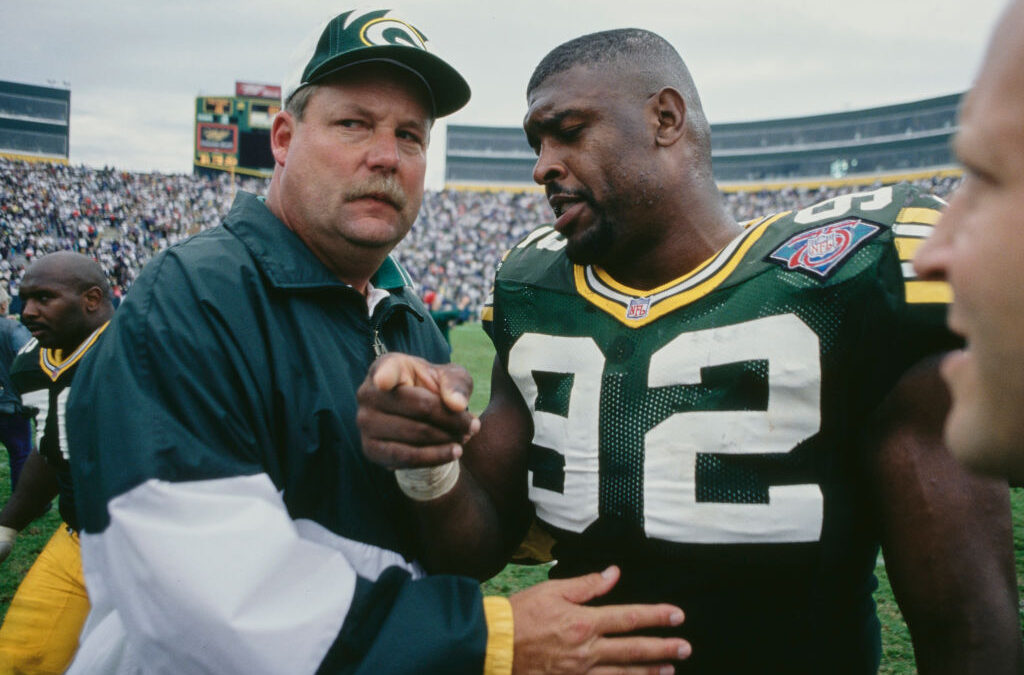
The late Reggie White initially retired in 1999 before coming back for one more year with the Panthers in 2000. But if you focus strictly on his first 14 NFL seasons – 1985 to ‘98, you have two careers worthy of a Gold Jacket.
“The Minister of Defense” played his first eight seasons with the Philadelphia Eagles. In that period, the Hall of Fame defensive end had 124 sacks, 18 forced fumbles and 11 fumble recoveries.
Aside from his 1985 rookie year, White made the Pro Bowl every single season as an Eagle. He was a six-time first-team all-pro, 1980s all-decade team member and two-time sacks leader, leading the league there in the 1987 and ‘88 seasons.
Oh, and he won Defensive Player of the Year honors in 1987.
White would have been a Hall of Famer if he walked away after the 1992 season. But the future Canton member signed with the Green Bay Packers in 1993, marking the start of Hall of Fame career No. 2.
White proved to be the final piece needed in helping Brett Favre’s Packers get over the hump once and for all. He helped the team to a Super Bowl 31 championship in the 1996 season and to another big game appearance the following year, where they fell to John Elway’s Broncos.
In six years as a Packer, White had 68.5 sacks, 14 forced fumbles and eight fumble recoveries. He won his second Defensive Player of the Year award in 1998 after tallying 16 sacks.
White was named to the 1990s All-Decade Team as well as the NFL’s 75th Anniversary and 100th Anniversary All-Time teams. And by the way, both the Eagles and Packers retired his iconic No. 92 — putting stamps on the man who crafted two Canton careers in 14 seasons.
Larry Fitzgerald
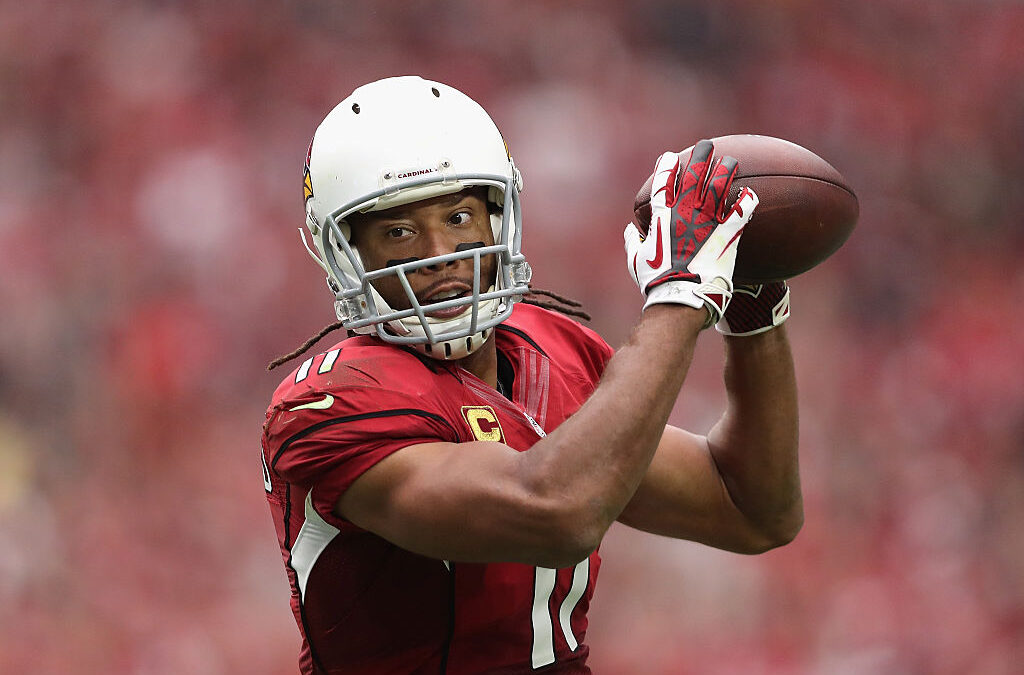
The Arizona Cardinals legend spent his entire 17-career in the Desert which spanned from 2004 to 2020. He never quite hit Jerry Rice’s level of greatness, but Fitzgerald displayed incredible longevity that we might never see again at the wide receiver position.
For convenience sake, we’ll exclude Fitzgerald’s final NFL season in 2020 which was the worst year of his career anyway.
Focus on the first half of his career from 2004 to 2011, and you have a lock for Canton. In that period, he had six seasons of 80-plus catches and over 1,000 yards receiving.
Not to mention that Fitzgerald put up an all-time performance in Arizona’s gut-wrenching loss to the Pittsburgh Steelers in Super Bowl 43. If Arizona had won that game,Fitz would have been your Super Bowl MVP.
Fitzgerald also led the league in receiving TDS in back-to-back years in 2008 and 09. From 2003 to 2011, he was a six-time Pro Bowler.
Now let’s focus on Fitzgerald’s stats from 2012 to 2019: 685 receptions — the third-most in that span — for 7,468 receiving yards and 47 touchdowns.
Throw in five Pro Bowl nods, and a spot on the 2010s All-Decade team, and we’d call that a second Hall of Fame career for “Fitz”.
Also, just consider that Kurt Warner was the one elite QB Fitzgerald ever worked with. This guy put up eye-popping stats with Kevin Kolb, Carson Palmer, Drew Stanton and Matt Leinart for crying out loud!
And by the way, only Jerry Rice has more career receiving yards and receptions than Fitz.
Ray Lewis
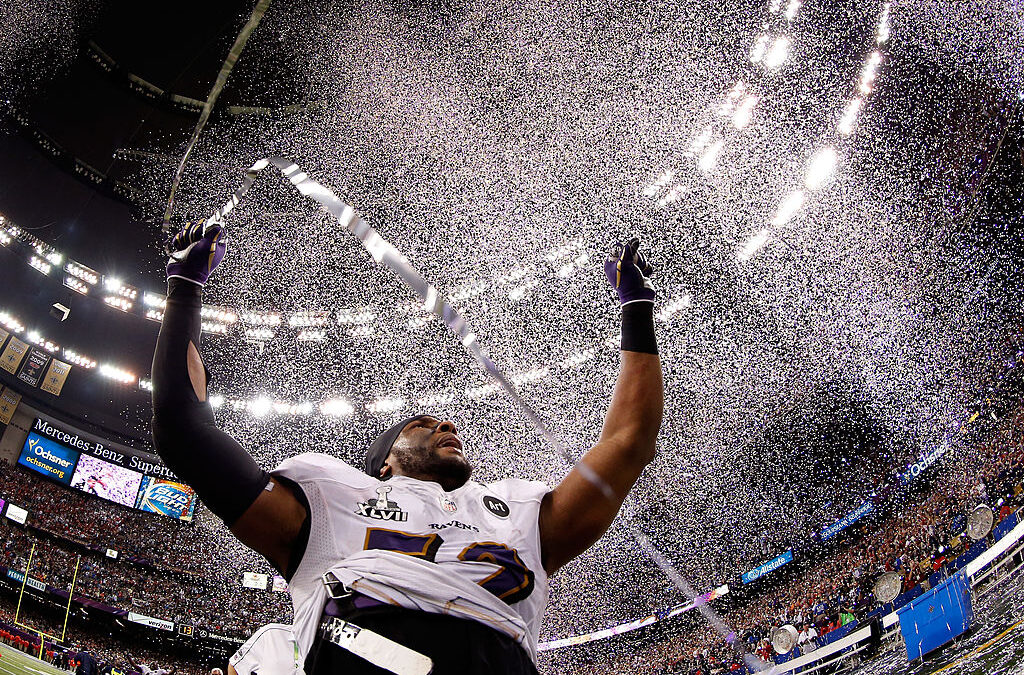
What more can be said about the Baltimore Ravens’ legend that hasn’t already been said, folks?
Lewis was drafted 26th overall by the Ravens in 1996 following their relocation from Cleveland. And just like that, the history of football in Baltimore had changed forever.
The workhorse linebacker emerged as the face of the Ravens’ franchise during their rapid rise to prominence. In just their fifth season of existence, the Ravens rode their suffocating defense to a Super Bowl 35 championship.
By the conclusion of his eighth NFL season in 2003, Lewis was a Super Bowl champion, Super Bowl 35 MVP, a two-time Defensive Player of the Year, a six-time Pro Bowler, a four-time first-team all-pro and a three-time NFL tackles leader.
From 2004 to 2012? Oh, just your casual seven-time Pro Bowl linebacker, four-time first-team all-pro, 2000s All-Decade team selection and one more Super Bowl championship in the 2012 season to close out your career.
Lewis was a game-wrecking superstar from day one up until his final NFL game. How fitting that he won two Super Bowl rings — one for each half of his Hall of Fame career.
Make that two Hall of Fame careers…
Terrell Owens
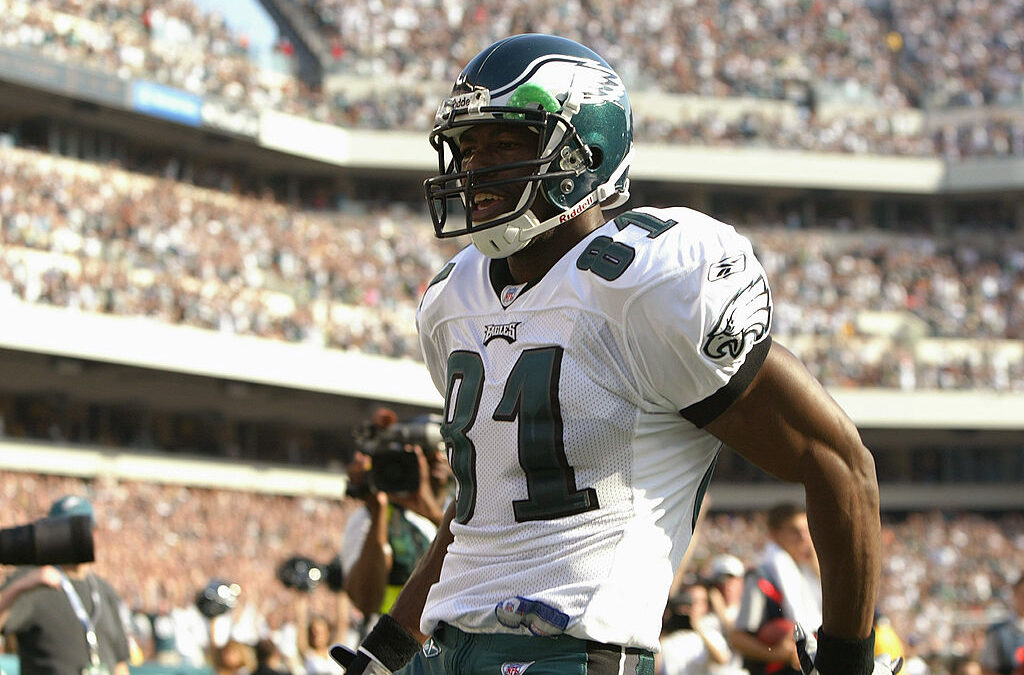
You kids who didn’t grow up with TO probably know him as the guy with all the epic TD celebrations that wouldn’t fly today — as well as the many epic soundbites.
But the Hall of Fame wideout was, arguably, a top-three all-time wide receiver who played 15 NFL seasons from 1996 to 2010. And like Jerry Rice and Larry Fitzgerald, Owens was an incredible model of consistency from start to finish.
Owens spent his first eight seasons with the 49ers before departing in 2004. By that point, he had five 60-catch and 1,000-yard seasons. Not bad considering he spent several of his prime years playing second-fiddle to Jerry Rice.
Owens was a four-time Pro Bowler in San Fran, having led the league in receiving TDs during the 2001 and ‘02 seasons. And he was a three-time first-team all-pro three years in a row from 2000 to ‘02.
Yep, TO would have been a Hall of Famer if he retired after eight years with the 49ers.
But he continued his greatness with the Philadelphia Eagles and Dallas Cowboys — leading Philly to a Super Bowl 39 appearance in the 2004 season.
Over his final seven seasons, Owens compiled 7,362 receiving yards and 72 touchdowns. Only Randy Moss had more in that span.
San Fran, Philly, Dallas, Buffalo and Cincinnati. Owens produced wherever he went, even though Steve Young was the only Hall of Fame quarterback TO got to play meaningful time with.
Bruce Smith
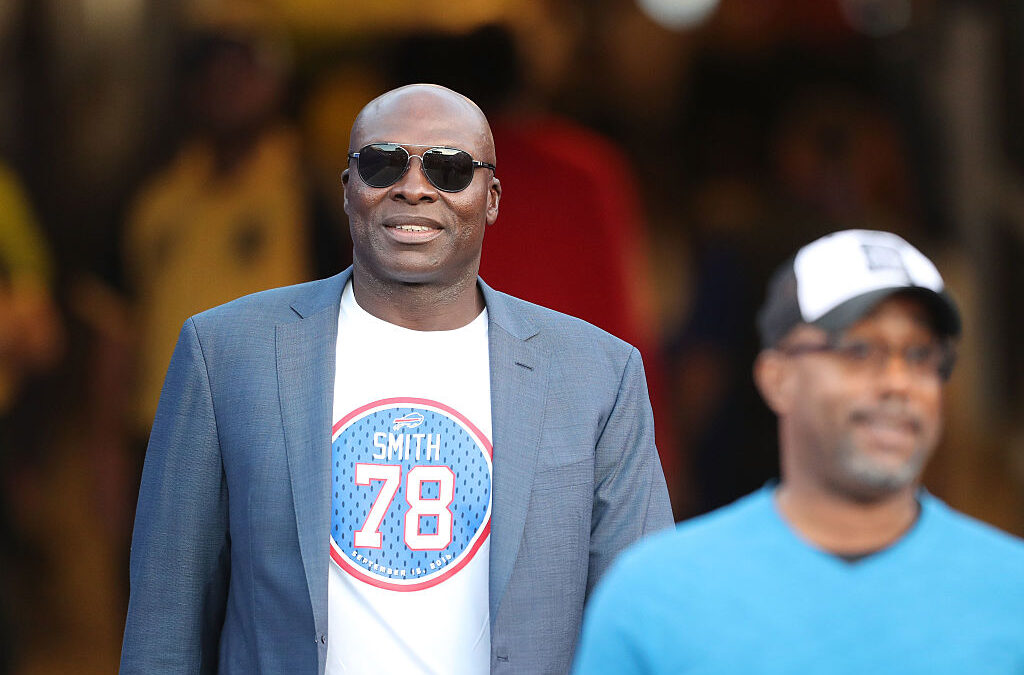
You better have had two Hall of Fame careers in one if you’re the NFL’s all-time sacks leader with a ridiculous quantity of 200 in 279 NFL games.
That was the case for Buffalo Bills legend Bruce Smith, who also played four seasons in Washington. He hit double-digit sacks in 13 of his 19 seasons, earned 11 Pro Bowl nods and nine first-team all-pro selections.
The two-time Defensive Player of the Year was vital in the Bills’ rise to prominence, leading them to four straight Super Bowl appearances from 1990 to ‘93.
Over his final 10 seasons — from 1994 to 2003, Smith twice led the league in forced fumbles, won ‘96 Defensive Player of the Year honors and racked up 94 sacks.
Also, you gotta have two Hall of Fame careers if you’re gonna earn All-Decade-Team selections in both the ‘80s and ‘90s. Such was the case for Mr. Smith.
Dan Marino
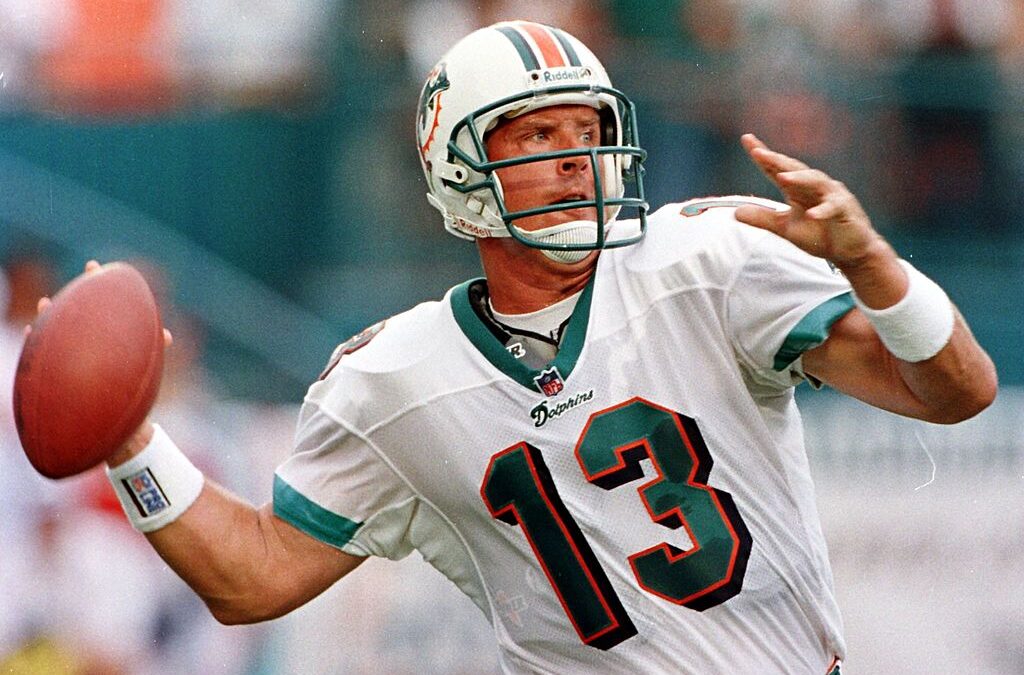
It’s unfortunate that Marino’s legacy is that of the greatest quarterback who never won a Super Bowl. In terms of individual talent, few were as decorated as Marino — who understandably believes he could throw for 6,000 yards in today’s league.
Marino led Miami to the postseason in 10 of his 17 NFL seasons. Yet the Dolphins only made one Super Bowl during his legendary career — in the 1984 season when he became the first QB to throw for 5,000 yards.
In the first eight years of his career, Marino was a one-time MVP, three-time first-team all-pro, five-time Pro Bowler and four-time passing yards leader. From 1991 to 1999? Four more Pro Bowls, one passing yards crown, two second-team all-pro selections and six playoff appearances.
Marino retired after the 1999 season as the all-time leader in passing yards and passing touchdowns.
Emmitt Smith
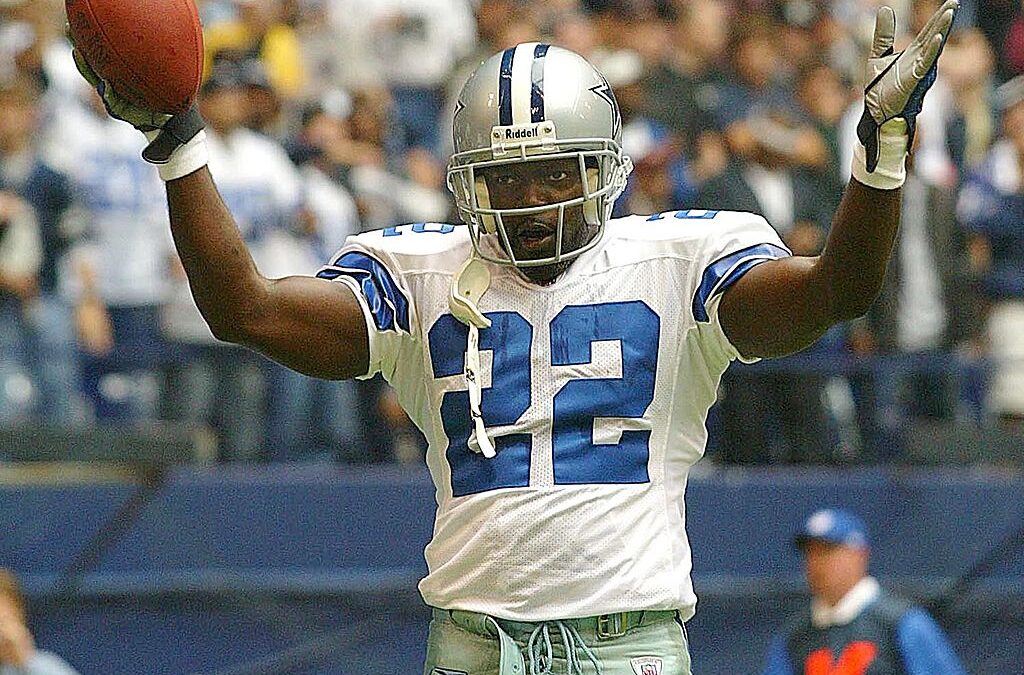
Trust us, you don’t retire as the NFL’s all-time leader in rushing yards and rushing scores without playing like a Hall of Famer for a decade and a half.
Now, most of Smith’s career highlights came inside his first seven seasons from 1990 to ‘96. He was the backbone of the ‘90s Cowboys dynasty that won three Super Bowls over a four-year span in 1992, 1993 and 1995.
His four first-team all-pro nods, 1993 NFL MVP award and four rushing titles all came within that first seven-year span too.
A first ballot Hall of Famer if he called it quits after 1996, yes. But 1997 to 2004 Emmitt Smith was also a Hall of Famer, folks.
Smith hit 1,000 K rushing every year from 1997 to 2001, and crossed 900 yards in 2002 and ‘04 at the end of his career.
If Terrell Davis can get into Canton with only four healthy seasons under his belt, then the 1997 to ‘04 version of Smith — with 8,195 rushing yards — is a surefire Hall of Famer. Thanks for coming to our Ted Talk!


